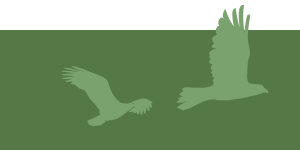
MOSI: MONITORING NEOTROPICAL MIGRANTS IN WINTER

Keep up to date with MoSI Program news with the Flight Calls Newsletter. Send an email to salbert@birdpop.org with the word Subscribe in the subject line.
What is the MoSI Program?
MoSI is a collaborative, international network of bird monitoring stations across the northern Neotropics that bolsters conservation efforts through population monitoring. Since 2002, the program has operated more than 250 stations in 22 countries to help answer questions such as:
- What factors affect site persistence on the wintering grounds?
- Where are the problems most acute, on the breeding or non-breeding grounds?
- What factors drive population declines?
- What is the relationship between population change and weather, climate, or habitat loss on the wintering grounds?
- What can we do to reverse declines?
Although MoSI concentrates on Neotropical migrant landbirds that breed in the United States and Canada, it also gathers important data on resident birds in host countries.
How Does MoSI Work?
MoSI uses a standardized protocol with a system of fine mesh nets to capture birds during the non-breeding season. MoSI stations are run by independent banders, non-profit conservation groups, university scientists, or Latin American government personnel. MoSI operators band the birds and collect information on their age, sex, and body condition.
Captured birds are then given a lightweight, numbered aluminum leg band and released unharmed. Like its sister program, Monitoring Avian Productivity and Survivorship (MAPS), MoSI strives to have individual stations operate over multiple years to yield information on the vital rates of bird populations, including population trend, site persistence, and adult survival rates.
Why is MoSI Important?
Without information on the full annual cycle of birds, it’s difficult to know what drives or limits populations and where and when to direct conservation efforts. MoSI helps elucidate the what, where, and why of bird population declines in ways that other kinds of population surveys cannot.
What have we learned from MoSI to date?
The importance of full annual-cycle conservation – protecting birds on migration and wintering sites as well as breeding areas – is increasingly recognized. The MoSI Program is expanding our understanding of the movements and habitat needs of Neotropical migrant birds across the full annual cycle, which is critical for understanding and predicting the effects of climate change and habitat degradation on bird populations. IBP and partners publish findings from MoSI in peer-reviewed journals and other kinds of scientific reports. MoSI has also trained scores of Latin American collaborators and researchers who continue to conduct important bird research.
How you can help
IBP is always looking for partners to:
- Establish new MoSI stations and help expand the MoSI network.
- Pose new research or management questions and collaborate with IBP or work independently to answer them using MoSI and MAPS data.
- Provide financial support for coordination of the MoSI Program.
For more information about the MoSI Program, please contact Steve Albert.
A short film about the MoSI program by Day's Edge Productions.
Photo Credits: Top of Page, Andy Reago and Chrissy McClarren

Wilson's Warbler. Photo by Jacob McGinnis/Flickr.
Migratory Connectivity
Recent advances in rapid, inexpensive DNA sequencing, some of it using feathers collected at MoSI and MAPS stations, have yielded great progress in linking breeding, migration, and wintering locales of particular bird populations. Other new tools include miniaturized GPS units and geolocators which can be used on birds as small as warblers. These tools and others can provide a more complete picture of bird annual cycles, critical areas for each stage in those cycles, and linkages between nesting, migrating, and wintering sites.
MoSI's network of banding stations in the neotropics has proven itself very valuable in IBP's collaboration with the Bird Genoscape Project, an effort using DNA sequencing to map the population-specific migratory flyways of 100 species of migratory birds. Understanding migratory connectivity, or where specific populations of birds spend the breeding season and non-breeding season, greatly benefits species conservation because efforts can be targeted to a declining population's specific breeding and non-breeding habitats.
In order to study migratory connectivity using DNA sequencing, samples (in the form of feathers) must be collected on both the breeding grounds and the non-breeding grounds. MoSI's broad network of partners and banding stations across 20 countries in the Neotropics are an ideal source of samples for the Bird Genoscape Project. You can learn more about IBP's collaboration with the Bird Genoscape Project on the MAPS program page.

Image from Ruegg et al. 2014. Mapping migration in a songbird using high-resolution genetic markers. Molecular Ecology 23:5726–5739.
SELECTED PUBLICATIONS
Peer-reviewed Publications Authored by IBP Personnel
Albert, S., A. Ash, R.S. Quintero Félix, J.C. Fernández-Ordóñez. 2025. El monitoreo de aves migratorias neártico-neotropicales en su temporada no reproductiva: éxitos, desafíos, y nuevas iniciativas del programa MoSI. [Successes, challenges, and new initiatives in the MoSI program]. Ornitología Neotropical 35:107-111. PDF
Albert, S., R. Rueda Hernandez, B.E. Hernandez-Banos, K. Ruegg, and T.B. Smith. 2025. Ampliar el monitoreo de la migración y aumentar la colaboración para la conservación de las aves migratorias Neotropicales-Nearcticas [Expanding migration monitoring and increasing collaboration for the conservation of Neotropical-Nearctic migratory birds]. Ornitología Neotropical 35:103-106. PDF
Zambrana Morales, N., S. Morales, K. Mena, O. Sandino, and S. Albert. 2025. Longevity record for a Brown-crested Flycatcher Myiarchus tyrannulus (Tyrannidae) from Ometepe Island, Nicaragua. Ornitologia Neotropical 36:28–32. PDF
Neate-Clegg, M.H.C., J.F. Saracco, F. Rodríguez-Vásquez, and S.E.I. Jones. 2024. Unraveling demographic patterns in tropical birds across an elevational gradient. Ornithological Applications 127:1–14. PDF
Pyle, P. 2024. Guía de Identificación de Aves de América del Norte, Parte I, Tomo I. R. Rueda-Hernández, M. Albornoz, C. Gigena, V. and S. Guallar, Translators. Ecoval Ediciones, México.
Albert, S., and R.B. Siegel. 2023. Improving the language of migratory bird science in North America. Ornithological Applications 126:1-4. PDF
Carnes, B.H., and A. Ash. 2023. Many Central American hummingbirds can be aged and sexed by molt patterns and bill corrugations. Journal of Field Ornithology 94:11. PDF
DeSaix, M.G., E.C. Anderson, C.M. Bossu, C.E. Rayne, T.M. Schweizer, N.J. Bayly, D.S. Narang, J.C. Hagelin, H. Lisle Gibbs, J.F. Saracco, T.W. Sherry, M.S. Webster, T.B. Smith, P.P. Marra and K.C. Ruegg. 2023. Low-coverage whole genome sequencing for highly accurate population assignment: Mapping migratory connectivity in the American Redstart (Setophaga ruticilla). Molecular Ecology 32:5528-5540. Available at: DOI: 10.1111/mec.17137
Pyle, P., L. DeCiccio, D. Gochfeld, A. Jaramillo, A.W. Kratter, M.W. Lockwood, M. Mutchler, and D. Sibley. 2023. 34th Report of the ABA Checklist Committee 2023. North American Birds 74(2):4-9. PDF
Pyle, P., S.N.G. Howell, D.I. Rogers, and C. Corben. 2024. Moult terminology: envisioning an evolutionary approach. Journal of Avian Biology 2024:e03169. PDF
Albert, S., C.J. Ralph, A. Hannuksela, W.H. Sakai, A. Nelson, C. Kondrat, M. Krzywicki, H. Garrod, C. Woolley, and C. Stuyck. 2022. Is the term "bird banding" obsolete? And what should we do about it? North American Bird Bander 47:199-200. PDF
Pyle, P. 2022. Identification Guide to North American Birds, Part 1, 2nd Edition. Slate Creek Press, Forest Knolls, California. 698 pp.
Pyle, P., M. Gahbauer, E.I. Johnson, T.B. Ryder, and J.D. Wolfe. 2022. Application of a global age-coding system (WRP), based on molts and plumages, for use in demographic and other studies of birds. Ornithology 139:1-12. PDF
Albert, S. J.D. Wolfe, J. Kellerman, T. Sherry, B.J.M. Stutchbury, N.J. Bayly, and A. Ruiz-Sanchez. 2020. Habitat ecology of Nearctic-Neotropical migratory landbirds on the nonbreeding grounds. The Condor: Ornithological Applications 122:1-18. PDF
Dayer, A.A., E.A. Silva-Rodriguez, S. Albert, M. Chapman, B. Zukowski, J.T. Ibarra, G. Gifford, A. Echeverri, A. Martínez-Salinas, and C. Sepulveda-Luque. 2020. Applying conservation social science to study the human dimensions of Neotropical bird conservation. The Condor: Ornithological Applications 122:1-15. PDF
Ruegg, K.C., R.J. Harrigan, J.F. Saracco, T.B. Smith, and C.M. Taylor. 2020. A genoscapennetwork model for conservation prioritization in a migratory bird. Conservation Biology 34:1482-1491. For a copy of this publication, please contact Jim Saracco.
Carnes, B., and A. Ash. 2019. Evidence for suspension of prebasic molt in a White-eyed Vireo. Western Birds 50:52-54. PDF
Albert, S., K. Ruegg, and R.B. Siegel. 2018. El uso de marcadores intrínsicos y extrínsicos para enlazar poblaciones de aves a través de las Américas [Use of intrinsic and extrinsic markers to link bird populations across the Americas]. Zeledonia 22:8-20. PDF
DeSante, D.F., Kaschube, D.R., and Saracco, J.F. 2018. Population changes and their demographic drivers in landbirds of western North America: an assessment from the Monitoring Avian Productivity and Survivorship program. Pages 269-293 in: W.D. Shuford, R.E. Gill Jr., and C.M. Handel, eds. Trends and Traditions: Avifaunal Change in Western North America. Studies of Western Birds No. 3.
Rueda-Hernandez, R., S. Guallar, A. Ruiz-Sanchez, and P. Pyle. 2018. The molt issue: where do we go from now? Ornitología Neotropical 29:S1-S2. PDF
Albert, S., D. DeSante, R. Siegel, D. Kaschube, and J. Saracco. 2016. Monitoring landbirds in national parks: understanding populations, migratory connectivity, and climate change. Pages 11-17 in: S. Weber, editor. Engagement, Education, and Expectations — The Future of Parks and Protected Areas: Proceedings of the 2015 George Wright Society Conference on Parks, Protected Areas, and Cultural Sites. Hancock, Michigan: George Wright Society. PDF
Ortiz-Pulido, R., J.L. Alcanntara-Carbajal, H. de la Cueva, J. Martínez-Gomez, P. Escalante Pliego, S.M. de la Parra-Martinez, T.P. Feria Arroyo y S. Albert. 2016. Conservacion de aves en Mexico: una instantanea de 2015. Huitzil: Revista Mexicana Ornitologica 17:234-238. PDF
Ruiz-Gutierrez, V., W.L. Kendall, J.F. Saracco, and G.C. White. 2016. Overwintering strategies of migratory birds: a novel approach for estimating seasonal movement patterns of residents and transients. The Journal of Applied Ecology. 53:1035–1045. (For a copy of this publication, please contact Jim Saracco.)
DeSante, D.F., D.R. Kaschube, and J.F. Saracco. 2015. Vital rates of North American landbirds. The Institute for Bird Populations. www.VitalRatesOfNorthAmericanLandbirds.org.
Ruegg, K., E. Anderson, K. Paxton, V. Apkenas, S. Lao, R.B. Siegel, D.F. DeSante, F. Moore, and T. Smith. 2014. Mapping migration in a songbird using high-resolution genetic markers. Molecular Ecology 23:5726-5739. PDF
Rushing, C.S., T.B. Ryder, J. Saracco, and P.P. Marra. 2014. Assessing migratory connectivity for a long-distance migratory bird using multiple intrinsic data sources. Ecological Applications 24:445-456. PDF
Rundel, C.W., M.B. Wunder, A.H. Alvarado, K.C. Ruegg, R. Harrington, A. Schuh, J.F. Kelly, R.B. Siegel, D.F. DeSante, T.B. Smith, and J. Novembre. 2013. Novel statistical methods for integrating genetic and stable isotope data to infer individual-level migratory connectivity. Molecular Ecology 22:4163-4176. PDF
LaManna, J.A., T.L. George, J.F. Saracco, M.P. Nott, and D.F. DeSante. 2012. El Niño-Southern Oscillation influences annual survival of a migratory songbird at a regional scale. The Auk 129:734-743. PDF
Ruiz-Sanchez, A., R. Rueda-Hernandez, S. Guallar, and P. Pyle. 2012. Age determination of the Spot-breasted Wren and the White-breasted Wood-Wren using molt limits. North American Bird Bander 37:93-100. PDF
Wolfe, J.D., and P. Pyle. 2012. Progress in our understanding of molt patterns in Central American and Caribbean landbirds. In: Proceedings of the IX Neotropical Ornithological Congress-Peru. Ornitologia Neotropical 23:153-158. PDF
Wolfe, J.D., T.B. Ryder, P. Pyle, and E.I. Johnson. 2012. Using molt and plumage cycles to age tropical birds: updates and recent advances. Ornitologia Neotropical 23:153-158. PDF
Johnson, E.I., J.D. Wolfe, T.B. Ryder, and P. Pyle. 2011. Modifications to a molt-based ageing system proposed by Wolfe et al. (2010). Journal of Field Ornithology 82:422-424. PDF
Pyle, P. 2011. Book review: Guallar et al., Paseriformes del Occidente de Mexico: morfometria, datacion y sexado. Revista Catalana d'Ornitologia 27:45-47. (Catalan Version) PDF
Pyle, P. 2011. Book review: Guallar et al., Paseriformes del Occidente de Mexico: morfometria, datacion y sexado. Western Birds 42:120-122. (English Version) PDF
Wolfe, J.D., T.B. Ryder, and P. Pyle. 2010. Using molt cycles to categorize the age of tropical birds: an integrative new system. Journal of Field Ornithology 81:186-194. PDF
Froehlich, D. 2009. Ageing North American landbirds by molt limits and plumage criteria: a photographic companion guide to the Identification Guide to North American Birds, Part I. Slate Creek Press, Bolinas, CA. PDF
Saracco, J.F., D.F. DeSante, M.P. Nott, and D.R. Kaschube. 2009. Using the MAPS and MoSI Programs to monitor landbirds and inform conservation. Pages 651-658 in: T.D. Rich, C.D. Thompson, D. Demarest, and C. Arizmendi, editors. Proceedings of the Fourth International Partners in Flight Conference: Tundra to Tropics. University of Texas-Pan American Press. PDF
Wolfe, J.D., P. Pyle, and C.J. Ralph. 2009. Breeding seasons, molt patterns, and gender and age criteria for selected northeastern Costa Rican resident landbirds. The Wilson Journal of Ornithology 121:556-567. PDF
DeSante, D.F., T.S. Sillett, R.B. Siegel, J.F. Saracco, C.A. Romo de Vivar Alvarez, S. Morales, A. Cerezo, D. Kaschube, B. Milá, and M. Grosselet. 2005. MoSI (Monitoreo de Sobrevivencia Invernal): assessing habitat-specific overwintering survival of neotropical migratory landbirds. Pages 926-936 in: C.J. Ralph and T.D. Rich, editors. Bird Conservation Implementation and Integration in the Americas. U.S.D.A. Forest Service General Technical Report PSW-GTR-191. PDF
Pyle, P., A. McAndrews, P. Velez, R.L. Wilkerson, R.B. Siegel, and D.F. DeSante. 2004. Molt patterns, and age and sex determination of selected southeastern Cuban landbirds. Journal of Field Ornithology 75:136-145. PDF
Latta, S.C., A. Tossas, A. Sutton, H. Gonzales, P.B. Hamel, and D. DeSante. 2003. Research, monitoring, and conservation of neotropical migratory landbirds in the West Indies. The Journal of Caribbean Ornithology 16:1-19.
Buckley, P.A., C.M. Francis, P. Blancher, D.F. Desante, C.S. Robbins, G. Smith, and P. Cannell. 1998. The North American bird banding program: into the 21st Century. Journal of Field Ornithology 69:511-692. PDF
DeSante, D.F., and D.K. Rosenberg. 1998. What do we need to monitor in order to manage landbirds? Pages 93-106 in: J.M. Marzluff, and R. Sallabanks, editors. Avian Conservation: Research and Management. Island Press, Washington, D.C. PDF
Pyle, P. 1997. Identification Guide to North American Birds. Part 1. Slate Creek Press, Bolinas, CA. 742 pp.
Ralph, C.J., G.R. Geupel, P. Pyle, T.E. Martin, D.F. DeSante, and B. Milá. 1996. Manual de métodos de campo para el monitoreo de aves terrestres. General Technical Report PSW-GTR-159. Albany, CA: Pacific Southwest Research Station, Forest Service, U.S. Department of Agriculture. PDF
Pyle, P., S.N.G. Howell, R.P. Yunick, and D.F. DeSante. 1987. Identification Guide to North American Passerines. Slate Creek Press, Bolinas, CA.
Peer-reviewed Publications by Other Researchers
Rodríguez Vásquez, F., and C. Taylor. 2024 An overview of the drivers of performance in nonbreeding Nearctic-Neotropical migratory songbirds. Ornithology 141:1-17. PDF
Carnes, B., and A. Ash. 2022. Movimiento a larga distancia de la Reinita Hornera (Seiurus aurocapilla) en areas no reproductivas (Long-distance movement of a banded Ovenbird (Seiurus aurocapilla) on the nonbreeding grounds. Zeledonia 26:71-76. PDF
Lele, A., H.M. Garrod, E. Ferguson, C. Azahara Prieto Gil, and M. Ellis. 2022. Variation in avian morphology along a short tropical elevational gradient. Biotropica 54:869-880.
Winger, B.M., and T.M. Pegan. 2021. Migration distance is a fundamental axis of the slow-fast continuum of life history in boreal birds. Ornithology 138:11-18. PDF
Gochanour, B., J.L. Alcantara, P. Cimprich, J.F. Kelly, and A. Contina. 2020. Filling the gap: molting behavior of Colima Warblers and research opportunities for understanding North American songbirds. The Southwestern Naturalist 63:249-257. PDF
Scholer, M.N., M. Strimas-Mackey, and J.E. Jankowski. 2020. A meta-analysis of global avian survival across species and latitude. Ecology Letters 10.1111/ele.13573. PDF
Mendieta, R., J.M. Zolotoff, M.A. Torrez, and M. Ignacia Galeano. 2019. Primer registro del Pinzon Piquirrecto (Haplospiza rustica) en el Pacifico de Nicaragua / First record of a Slaty Finch (Haplospiza rustica) on the Pacific slope of Nicaragua. Zeledonia 23:27-30. PDF
Nochebuena Jaramillo, J.R., and M. Gaytán Núñez. 2019. Longevity estimates for Mangrove Warbler and Hooded Oriole from Isla Contoy National Park, Quintana Roo, Mexico. North American Bird Bander 44:10. PDF
Torrez, M.A., and W.J. Arendt. 2017. La Muda en especies de aves selectas de Nicaragua [Molt in selected species of Nicaraguan birds.] UCA Publicaciones, The University of Central America, Managua. PDF
Martínez-Salinas, A. and F. DeClerck. 2015. El papel de los agroecosistemas y bosques en la conservacion de aves dentro de corredores biologicos. Mesoamericana 14:35-50. PDF
Medina, J.P., C. Salgado-Miranda, M. Garcia-Conejo, K.P. Galindo-Sanchez, C.J. Mejía-García, M.K. Janczur, C.W. Gomes Lopes, B.P. Berto, and E. Soriano-Vargas. 2015. Coccidia in passerines from the Nevado de Toluca National Park, Mexico. Acta Parasitologica 60:173-174. PDF
Langle-Flores, A., E.M. Barba-Robert, and A. Reyes-Magallanes. 2011. Estatus invernal de Junco hyemalis en el estado de Jalisco, Mexico. Huitzl 12:5-8. PDF
Rodriguez-Ruíz, E.R., H.A. Garza-Torres, C.A. Ríos-Munoz, and A.G. Navarro-Siguenza. 2011. La distribucion geografica de la tangara azul-gris (Thraupis episcopus) en habitats modificados antropogenicamente en Mexico. Revista Mexicana de Biodiversidad 82:989-996. PDF
Calvert, A.M., J. Woodcock, and J.D. McCracken. 2010. Contrasting seasonal survivorship of two migratory songbirds wintering in threatened mangrove forests. Avian Conservation and Ecology 5:2. PDF
Espericueta-Viera, J.C., and A. Leal-Sandoval. 2010. Aves capturadas en tres estaciones de anillado durante el Programa Monitoreo de Sobrevivencia Invernal (MoSI) en el estado de Sinaloa. El canto del Centzontle 1:49-64.
Leal-Sandoval, A., J. Fonseca-Parra, and J.A. Castillo-Guerrero. 2009. Noteworthy bird records from central Sinaloa, Mexico. Huitzl 10:63-65. PDF
Maglianesi, M.A. 2009. Establecimiento y manejo de una estacion del Programa de Monitoreo de Sobrevivencia Invernal (MoSI) en un bosque tropical seco. Zeledonia 13:23-32. PDF
Woodcock, J., and M. Woodcock. 2009. Una Reinita Amarilla (Dendroica petechia) anillada en Costa Rica recapturada en los EE.UU. Zeledonia 13:28-29. PDF
Gutierrez-Ramirez M. 2007. Comportamiento poblacional de aves y biometría de Elaenia frantzii en el bosque nuboso de la Reserva Natural Volcan Mombacho. Un estudio de cinco actos de la avifauna de Mombacho, diciembre 2002 a marzo 2007. Monografia, Tesis de Licenciatura en Biología, UNAN Managua, Nicaragua. PDF
Piaskowski, V.D., M. Teul, K.M. Williams, and R.N. Cal. 2006. Birds of the Sibun riverine forest, Belize. Ornitología Neotropical 17:333-352. PDF
Piaskowski, V.D., M. Teul, R.N. Cal, and K.M. Williams. 2005. Habitat associations of Neotropical migrants in Belize, Central America, during the non-breeding season. The Passenger Pigeon 67:61-76. PDF
Other Publications and Reports
Pyle, P., M. Gustafson, A. Jaramillo, T. Johnson, A.W. Kratter, A. Lang, M.W. Lockwood, M. Mutchler, and D. Sibley. 2022. 33rd Report of the ABA Checklist Committee 2022. North American Birds 73(2):18-23. PDF
Pyle, P., M. Gustafson, T. Johnson, A. Kratter, A. Lang, M.W. Lockwood, K. Nelson, and D. Sibley. 2021. 32nd report of the ABA Checklist Committee. North American Birds 72(2):10-17. PDF
Walker, M. 2020. Catch, release, catch again: Is bird banding still valuable in the 21st century? Birding 53(2):44-49. PDF
Pyle, P. 2016. Rock or Purple Sandpiper? An evaluation of a California vagrant. The Institute for Bird Populations, Petaluma, California. PDF
Saracco, J.F., and V. Ruiz-Gutierrez. 2012. Development of restoration and scaling options for songbirds. The Institute for Bird Populations, Point Reyes Station, CA. PDF
Saracco, J.F., V. Ruiz-Gutierrez, W.L. Kendall, P. Pyle, and R. Taylor. 2012. Identification and management of priority winter bird habitats for migratory landbirds: research results and implications for conserving and managing winter habitat. Report to the U.S. Fish and Wildlife Service. The Institute for Bird Populations, Point Reyes Station, CA. PDF
Siegel, R.B., and D.R. Kaschube. 2012. Evaluating the capacity of the Monitoring Avian Productivity and Survival (MAPS) and Monitoreo de Sobrevivencia Invernal (MoSI) Programs to monitor hummingbird populations. Report to the Hummingbird Monitoring Network. The Institute for Bird Populations, Point Reyes Station, CA.
Andino, L., and O. Komar. 2010. Sexto Informe Anual, Proyecto de Monitoreo Permanente de Aves Terrestres, El Salvador. SalvaNATURA, El Salvador.
DeSante, D.F., and J.F. Saracco. 2010. MoSI (Monitoreo de Sobrevivencia Invernal) Manual: instructions for establishing and operating bird banding stations as part of the MoSI Program. The Institute for Bird Populations, Point Reyes Station, CA.
DeSante, D.F., and J.S. Saracco. 2009. Instrucciones para el establecimiento y manejo de estaciones de una estacion de anillamiento de aves del Programa MoSI. The Institute for Bird Populations, Point Reyes Station, CA.
Martínez Leyva, E., E. Ruelas Inzunza, O. Cruz Carretero, J.L. Barr, E. Peresbarbosa, I. Chávez Dominguez, G. Ramón Lara, R. Rodriguez Mesa, A. García Miranda, and N. Ferriz Domnínquez. 2009. Pages 62-70 in: D.T. Rich, C.D. Thompson, D. Demarest, and C. Arizmendi, editors. Proceedings of the Fourth International Partners in Flight Conference: Tundra to Tropics. University of Texas-Pan American Press. PDF
Saracco, J.F., D.F. DeSante, and D.R. Kaschube. 2008. Modeling over-wintering survival of declining landbirds: final report on four years of the Monitoring Avian Winter Survival (MAWS) Program on southeastern U.S. Department of Defense installations. Submitted to the Department of Defense Legacy Resource Management Program. The Institute for Bird Populations, Point Reyes Station, CA. PDF
Saracco, J.F., D.F. DeSante, P. Pyle, S. Morales, J.L. Alcantara, and C. Romo. 2008 Assessing winter habitat quality for migratory landbirds: a report on five winters (2002-03 through 2006-07) of the Monitoreo de Sobrevivencia Invernal (MoSI) Program. Technical report submitted to the U.S. Fish and Wildlife Service. The Institute for Bird Populations, Point Reyes Station, CA. PDF
Saracco, J.F., D.F. DeSante, P. Pyle, S. Morales, J.L. Alcantara, and C. Romo. 2008 Determinacion de la calidad del habitat de invierno para aves migratorias terrestres. The Institute for Bird Populations, Point Reyes Station, CA. PDF
Saracco, J.F. and D.F. DeSante. 2006. 2006 annual performance report for NMBCA project: habitat-management strategies that enhance overwintering survival of migratory landbirds. The Institute for Bird Populations, Point Reyes Station, CA. PDF
Saracco, J.F., D.F. DeSante, and D.R. Kaschube. 2006. Modeling overwintering survival of declining landbirds: a technical analysis of the Monitoring Avian Winter Survival (MAWS) Program on four DoD installations in the Southeastern United States. Submitted to the Legacy Resources Management Program for the DoD Legacy Project. The Institute for Bird Populations, Point Reyes Station, CA. PDF
Woodcock, J.M. 2006. Ecology of winter resident Prothonotary Warblers in Costa Rica 2005/2006 Report. Report by John Woodcock for the Canadian Wildlife Service. PDF
DeSante, D.F., J.F. Saracco, and D.R. Kaschube. 2005. Modeling overwintering survival of declining landbirds: the 2004-05 Annual Report of the Monitoring Avian Winter Survival (MAWS) Program on four DoD Installations in the southeastern United States, 2004-05 annual technical report to the Legacy Resources Management Program. The Institute for Bird Populations, Point Reyes Station, CA. PDF
Saracco, J F., D.F. DeSante, C. Romo de Vivar Alvarez, S. Morales, B. Mila, D.R. Kaschube and N. Michel. 2004. Modeling overwintering survival of declining landbirds: final report on four years of the Monitoring Avian Winter Survival (MAWS) Program on southeastern U.S. DoD installations. Technical report submitted to the U.S. Fish and Wildlife Service. The Institute for Bird Populations, Point Reyes Station, CA. PDF
Siegel, R.B., R.L. Wilkerson, D.F. DeSante, D.R. Kaschube, and T.S. Sillett. 2004. Survival rates of landbirds on U.S. Naval Station Guantanamo Bay, Cuba. Report to the Legacy Program of the Department of Defense. The Institute for Bird Populations, Point Reyes Station, CA.
Siegel, R.B., R. Wilkerson, D.R. Kaschube, and D.F. DeSante. 2003. Survival rates and productivity of landbirds on U.S. Naval Station Guantanamo Bay, Cuba. The Institute for Bird Populations, Point Reyes Station, CA.
Siegel, R.B., T.S. Sillett and D.F. DeSante. 2001. Survival rates and productivity of landbirds on U.S. Naval Station Guantanamo Bay, Cuba. The Institute for Bird Populations, Point Reyes Station, CA.
Siegel, R.B., and D.F. DeSante. 2002. Survival rates and productivity of landbirds on U.S. Naval Station Guantanamo Bay, Cuba. The Institute for Bird Populations, Point Reyes Station, CA.
Siegel, R.B., D. O'Grady and D.F. DeSante. 2000. Survival rates and productivity of landbirds on U.S. Naval Station Guantanamo Bay, Cuba. The Institute for Bird Populations, Point Reyes Station, CA.









